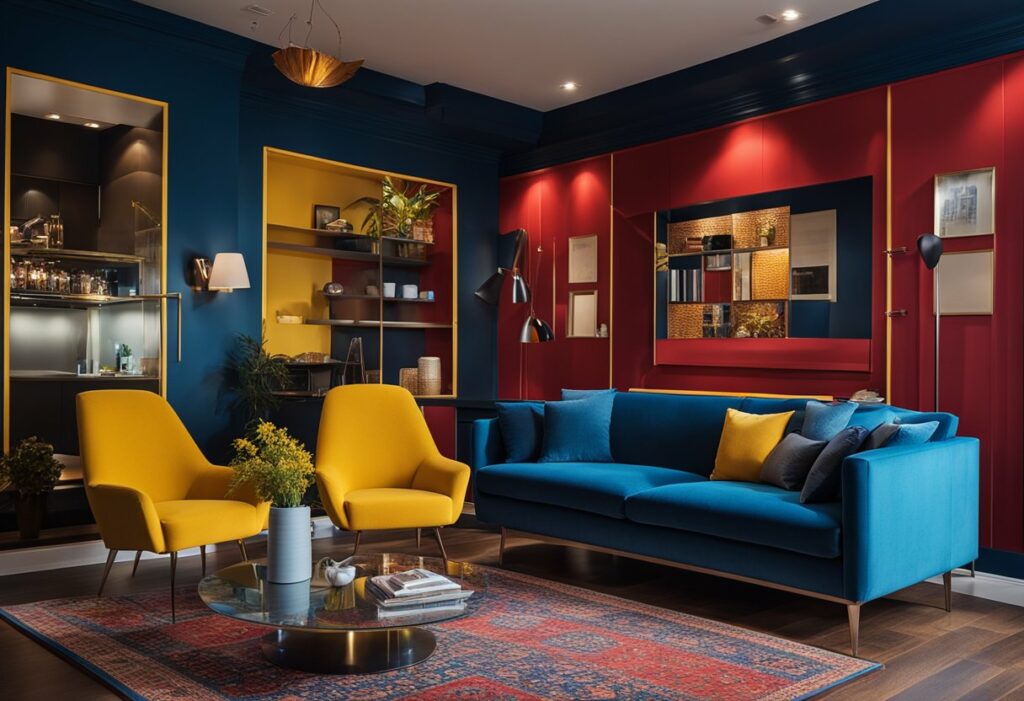Revamp Your Space: The Exciting Use of Colour in Interior Design
Are you looking to spruce up your living space? One of the easiest ways to do so is by incorporating colour into your interior design. Colour has the power to affect our mood and emotions, making it a crucial element in creating a welcoming and comfortable atmosphere in your home. In this article, we will explore the use of colour in interior design and how it can transform your living space.
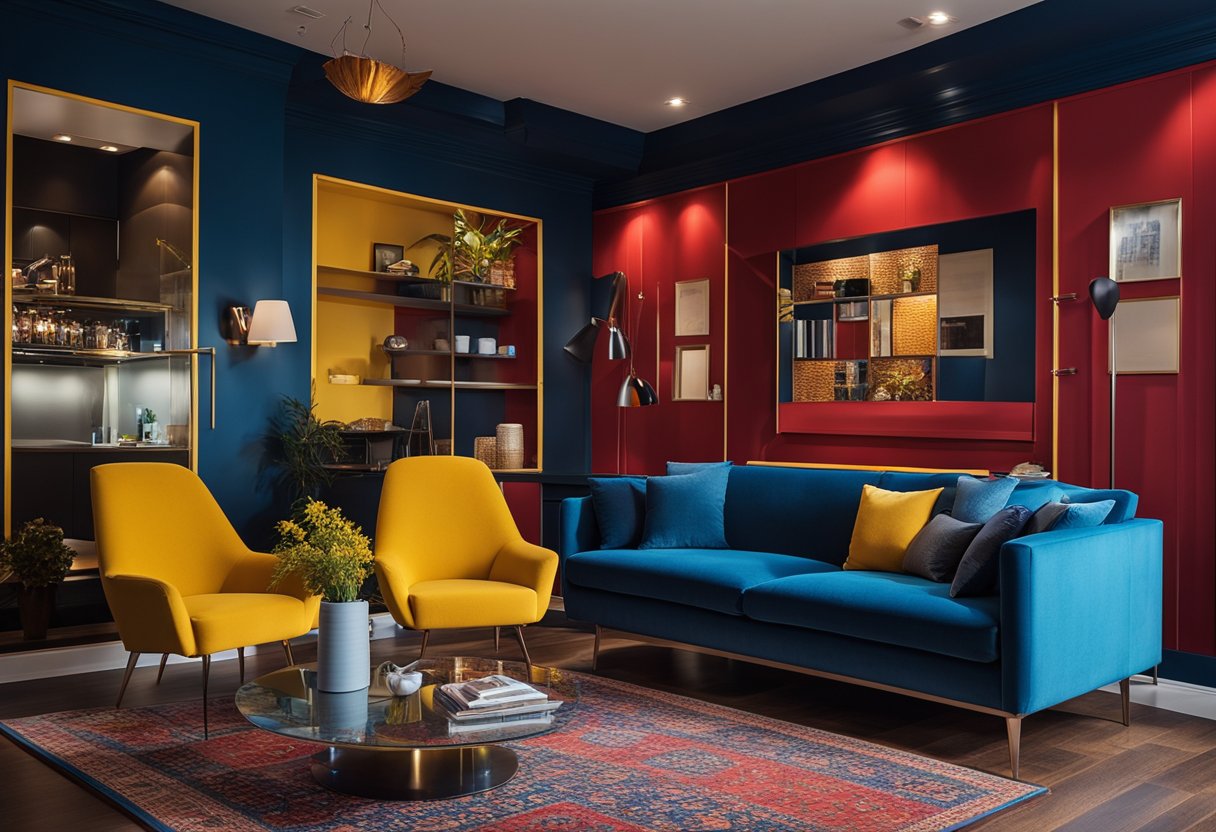
Psychology of Colours in Interior Design Colour psychology is the study of how colours affect human behaviour, mood, and emotions. Different colours can evoke different feelings and emotions, making it essential to choose the right colours for your interior design. For example, blue is known to have a calming effect, making it a great choice for bedrooms or relaxation areas. On the other hand, red is a bold and energising colour that can add a pop of excitement to any room.
Applying Colour Schemes to Interior Spaces Once you understand the psychology of colours, it’s time to apply it to your interior spaces. Colour schemes are combinations of colours that work well together, creating a cohesive and aesthetically pleasing design. There are several colour schemes to choose from, such as monochromatic, analogous, complementary, and triadic. Each scheme has its unique characteristics and can be used to achieve different design goals. By selecting the right colour scheme, you can create a harmonious and visually appealing living space.
Key Takeaways
- Colour has the power to affect our mood and emotions, making it a crucial element in creating a welcoming and comfortable atmosphere in your home.
- Understanding the psychology of colours is essential in choosing the right colours for your interior design.
- Applying the right colour schemes can create a harmonious and visually appealing living space.
Psychology of Colours in Interior Design
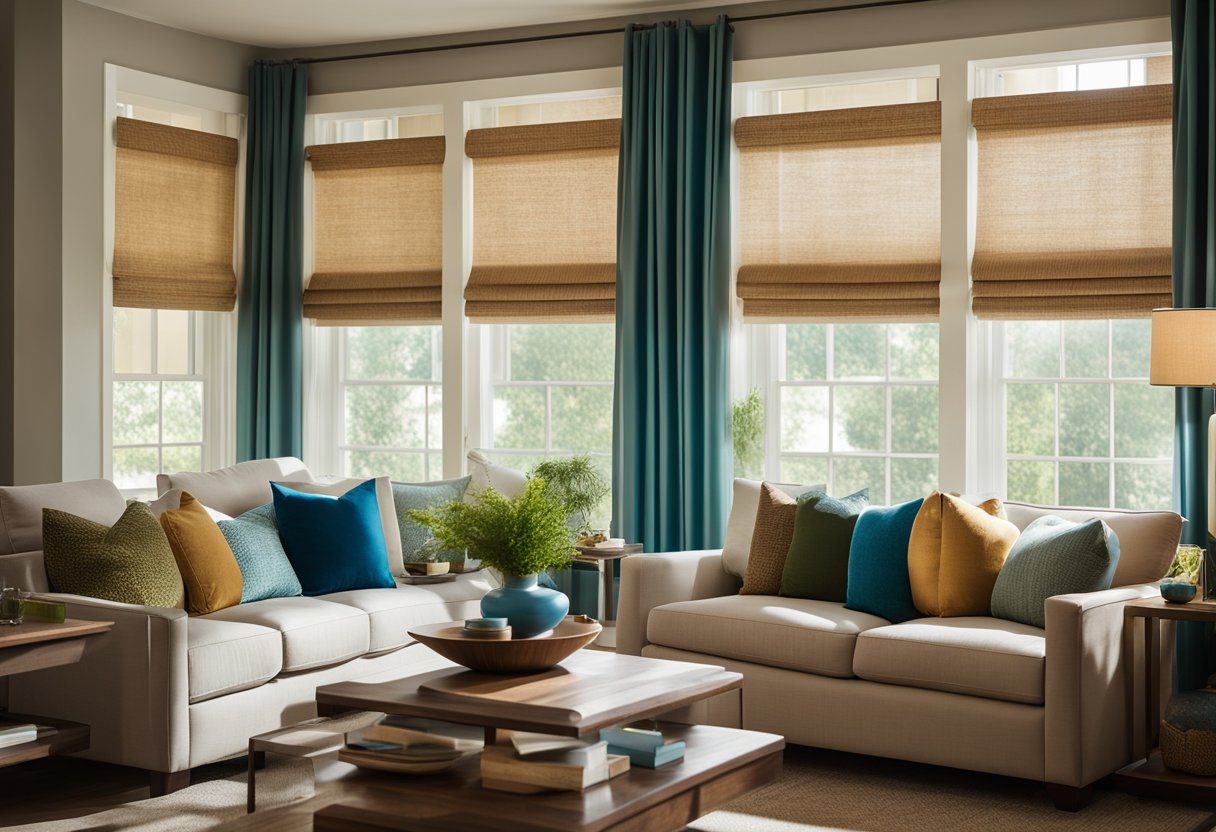
Colour is an essential element in interior design that can influence your mood, energy, and emotions. By understanding the psychology of colours, you can create a harmonious and exciting space that reflects your personality and style. In this section, we will explore the emotional impact of colours and the meanings of different colour combinations.
Emotional Impact of Colours
Colours can have a significant impact on your emotions and well-being. For example, warm colours such as red, orange, and yellow can create a sense of warmth, comfort, and passion. These colours are perfect for creating an inviting and cosy atmosphere in your living room or bedroom.
On the other hand, cool colours such as blue, green, and purple can create a sense of relaxation, tranquillity, and serenity. These colours are ideal for creating a peaceful and calming atmosphere in your bathroom or meditation room.
Colour Combinations and Their Meanings
Colour combinations can also have a profound impact on your emotions and mood. Here are some common colour combinations and their meanings:
- Red and black: This combination creates a sense of luxury, sophistication, and passion. It is perfect for creating a bold and dramatic look in your dining room or bedroom.
- Blue and white: This combination creates a sense of calmness, tranquillity, and serenity. It is perfect for creating a peaceful and relaxing atmosphere in your bathroom or bedroom.
- Yellow and green: This combination creates a sense of optimism, happiness, and energy. It is perfect for creating a vibrant and lively atmosphere in your kitchen or living room.
- Pink and grey: This combination creates a sense of sophistication, elegance, and femininity. It is perfect for creating a chic and stylish look in your bedroom or living room.
By understanding the emotional impact of colours and the meanings of different colour combinations, you can create a space that reflects your personality and style. Remember to choose colours that make you feel happy, comfortable, and relaxed, and you will create a space that you love spending time in.
Applying Colour Schemes to Interior Spaces
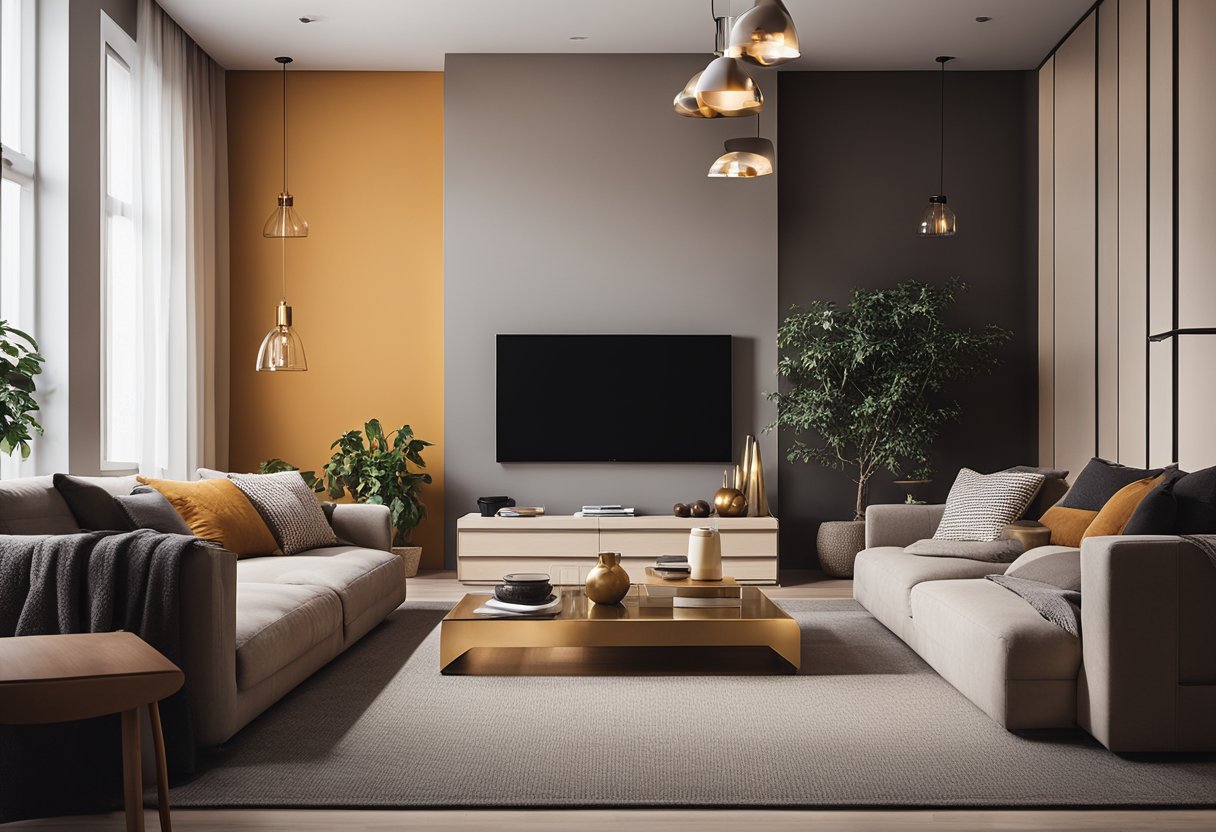
Colour is an essential element of interior design that can transform a space from dull and lifeless to lively and vibrant. The right colour scheme can create a cohesive and inviting atmosphere that reflects your personality and style. Here are some tips for applying colour schemes to different interior spaces.
Colours for Living Spaces
Living spaces such as the living room or family room are often the most used areas in a home. Therefore, it is essential to choose colours that create a warm, cosy, and inviting atmosphere. Neutral colours such as beige, taupe, or grey are perfect for creating a relaxed and elegant environment. Warm colours such as red, orange and yellow can add a lively and vibrant touch to your living space. It is important to strike a balance between neutral and warm colours to create a cohesive and sophisticated look.
Choosing Colours for Bedrooms
The bedroom is a sanctuary, and it is essential to choose colours that create a peaceful and inviting atmosphere. Soft and muted colours such as pastel pink, blue, or green can create a calming environment that promotes rest and relaxation. Cool tones such as blue or grey can create a sophisticated and luxurious look, while warm hues such as peach or yellow can add a touch of elegance and warmth. It is important to choose colours that complement your furniture, bedding, and artwork to create a cohesive and inviting atmosphere.
Influence of Colour in Small Spaces and Home Offices
Small spaces such as home offices or powder rooms can benefit from the use of light and bright colours. Lighter shades can create an illusion of space and make the room appear more significant than it is. Cool tones such as blue or green can create a calming and focused atmosphere, while warm colours such as orange or yellow can add a touch of energy and creativity. It is essential to choose colours that complement the space’s texture and proportion and create a contrast with the furniture or artwork to create a cohesive and inviting atmosphere.
In conclusion, the use of colour in interior design can transform a space from dull and lifeless to lively and inviting. It is essential to strike a balance between neutral and warm colours to create a cohesive and sophisticated look. Choosing colours that complement your furniture, bedding, and artwork can create a cohesive and inviting atmosphere. Lighter shades can create an illusion of space and make the room appear more significant than it is.
Frequently Asked Questions
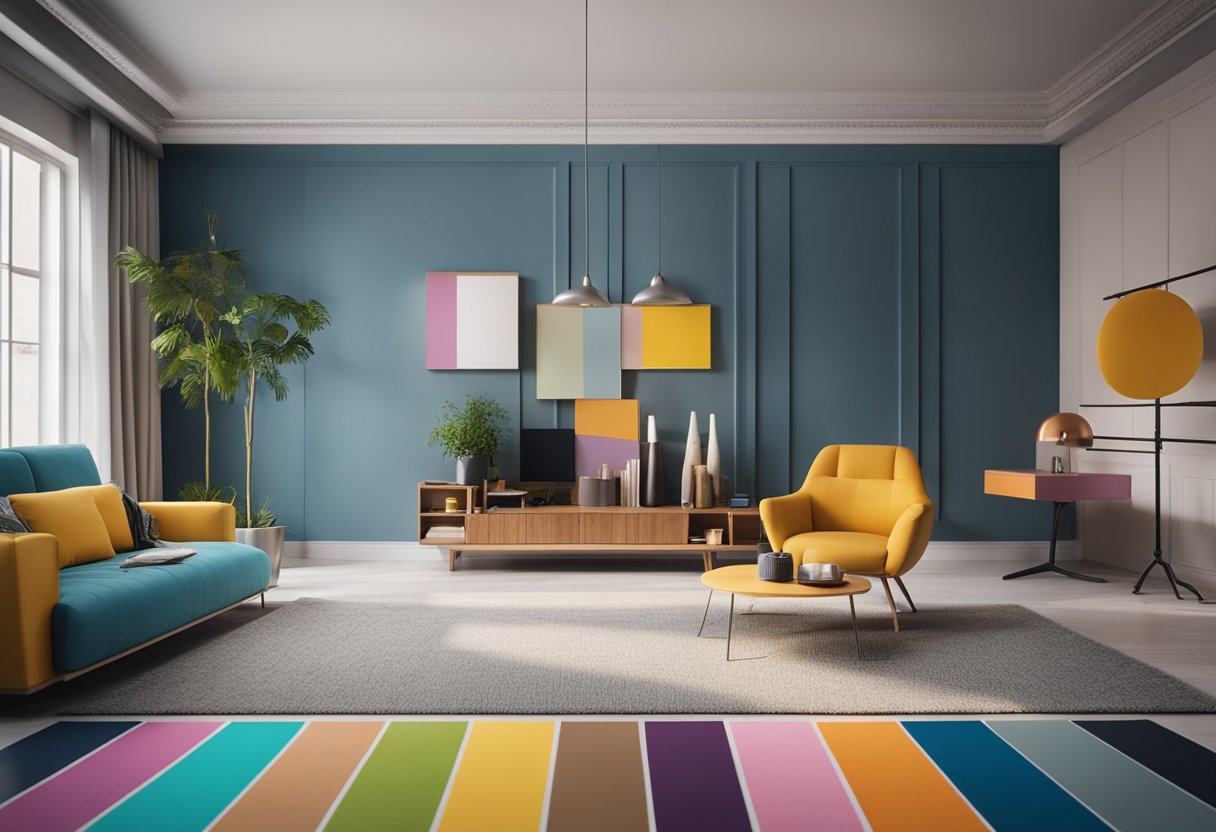
How can different colours influence the mood and atmosphere of a room?
Colours can have a significant impact on the mood and atmosphere of a room. Warm colours like red, orange and yellow can create a cosy and welcoming atmosphere. Cool colours like blue, green and purple can create a calming and relaxing atmosphere. Neutral colours like white, beige and grey can create a sophisticated and elegant atmosphere. It is important to consider the purpose of the room and the mood you want to create before selecting a colour scheme.
What are the essential principles for selecting a harmonious colour palette in a living space?
When selecting a colour palette, it is essential to consider the colour wheel and the relationship between colours. Complementary colours are opposite each other on the colour wheel and can create a vibrant and bold look. Analogous colours are next to each other on the colour wheel and can create a harmonious and cohesive look. Triadic colours are evenly spaced on the colour wheel and can create a balanced and dynamic look. It is also important to consider the intensity and saturation of colours to create a balanced and harmonious look.
In what ways does lighting affect the perception of colour within an interior design scheme?
Lighting can significantly affect the perception of colour within an interior design scheme. Natural light can enhance the vibrancy and saturation of colours, while artificial light can alter the hue and tone of colours. It is important to consider the direction, intensity and colour temperature of lighting when selecting a colour scheme. Warm lighting can enhance warm colours and create a cosy atmosphere, while cool lighting can enhance cool colours and create a relaxing atmosphere.
Why is colour considered a pivotal element in creating a cohesive interior design aesthetic?
Colour is considered a pivotal element in creating a cohesive interior design aesthetic because it can tie together different elements of a room. A harmonious colour scheme can create a sense of balance and unity within a space. It can also enhance the visual appeal of a room and create a lasting impression on visitors.
How can one effectively utilise the colour wheel to enhance the visual appeal of an interior?
The colour wheel can be effectively utilised to enhance the visual appeal of an interior by selecting complementary, analogous or triadic colour schemes. It is important to consider the intensity and saturation of colours to create a balanced and harmonious look. It is also important to consider the purpose of the room and the mood you want to create before selecting a colour scheme.
What are the psychological impacts of specific colours in the context of residential design?
Specific colours can have psychological impacts in the context of residential design. For example, blue can create a calming and relaxing atmosphere, while red can create a stimulating and energising atmosphere. Green can create a sense of balance and harmony, while yellow can create a sense of happiness and optimism. It is important to consider the psychological impacts of specific colours when selecting a colour scheme for a residential design project.

